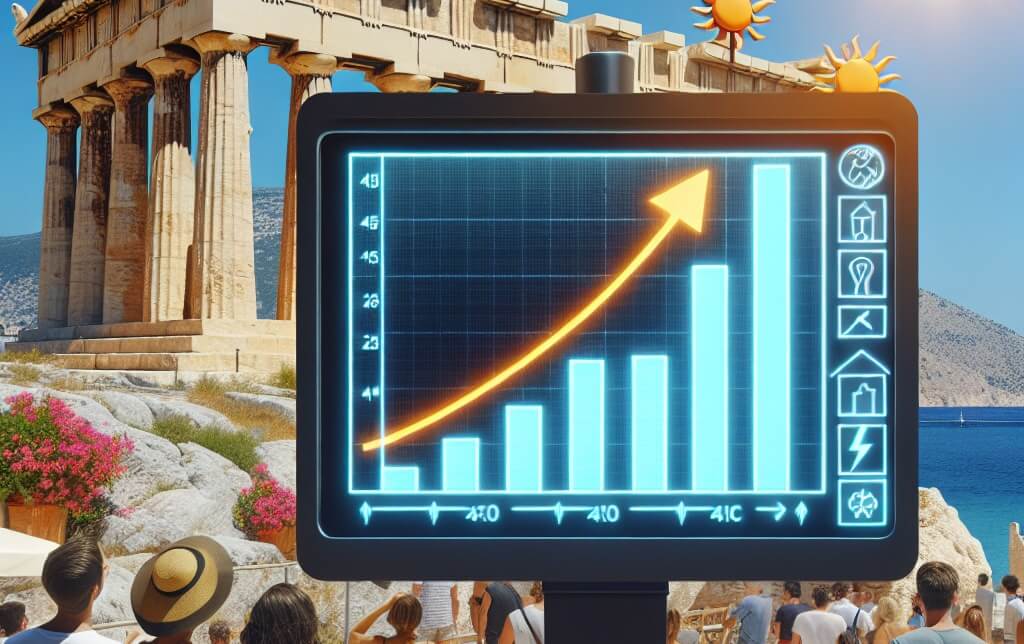
Discover Isthmia Greece: A Hidden Gem of Ancient History
Nestled in the Corinthian region of Greece lies the ancient site of Isthmia, a hidden gem of unparalleled historical significance. This archaeological wonder boasts a rich tapestry of ancient history, offering a glimpse into the cultural and athletic traditions of the ancient Greeks. From the imposing Temple of Poseidon to the renowned Isthmian Games, Isthmia stands as a testament to the ingenuity and creativity of the ancient civilizations that once thrived in this region. Exploring the ruins of Isthmia allows visitors to immerse themselves in a bygone era, where myths and legends intertwined with everyday life, shaping the course of history. For those seeking a unique and enlightening experience, Isthmia Greece promises an unforgettable journey through time and civilization.
I. Introduction
Isthmia, located in Greece, holds significant historical and cultural importance. This region, situated on the narrow strip of land connecting the Peloponnese to the Greek mainland, has been a focal point of trade, travel, and religious activities since ancient times. The archaeological site of Isthmia showcases the remains of ancient temples, athletic facilities, and other structures that provide valuable insights into the practices and beliefs of the ancient Greeks. By exploring the history and significance of Isthmia, we can gain a deeper understanding of the rich tapestry of Greek civilization and its enduring legacy in the modern world.
II. Ancient Sanctuary
Ancient Sanctuary II in Isthmia, Greece, holds significant historical and cultural importance. This sanctuary served as a place of worship and ritualistic practices for the ancient Greeks, dedicated to various gods and goddesses. The architecture and layout of the sanctuary reflect the religious beliefs and practices of the time, showcasing intricate designs and structures that were meant to inspire awe and reverence. Visitors to Ancient Sanctuary II can gain valuable insights into the spiritual and social aspects of ancient Greek society, shedding light on their beliefs, values, and traditions. The site stands as a testament to the enduring legacy of the ancient Greeks and the enduring power of religious devotion in shaping human history.
III. Archaeological Site
The archaeological site of Isthmia in Greece holds significant historical and cultural importance due to its rich heritage dating back to ancient times. As a site situated at the Isthmus of Corinth, it served as a crucial hub for trade and communication between the Peloponnese and mainland Greece. The excavations at Isthmia have uncovered a plethora of artifacts and structures, shedding light on the religious, athletic, and commercial activities that once took place here. Scholars have studied the site extensively, providing valuable insights into the social and political dynamics of the region during different periods of antiquity. The preservation and ongoing research at the Isthmia archaeological site continue to contribute to our understanding of the ancient world and its impact on modern society.
IV. Temple of Poseidon
The Temple of Poseidon, located in Isthmia, Greece, holds significant historical and cultural importance. Dedicated to the god of the sea, Poseidon, this ancient temple served as a place of worship and pilgrimage for the ancient Greeks. The construction of the temple dates back to the 6th century BCE, showcasing impressive Doric architecture typical of the era. The strategic location of the temple near the Isthmus of Corinth made it a prominent site for sailors and travelers seeking the protection and blessings of Poseidon before embarking on their maritime journeys. The Temple of Poseidon stands as a testament to the rich religious and architectural heritage of ancient Greece, attracting visitors from around the world to marvel at its grandeur and historical significance.
V. Isthmian Games
The Isthmian Games were a prominent athletic and cultural event held in ancient Greece at the Isthmus of Corinth every two years. This prestigious competition, second only to the Olympic Games, attracted athletes and spectators from various city-states across Greece. The games featured a variety of events, including foot races, wrestling, boxing, and chariot races, showcasing the physical prowess and skill of the participants. In addition to the athletic competitions, the Isthmian Games also included musical and poetic performances, adding a cultural dimension to the festivities. The significance of the Isthmian Games extended beyond mere competition, serving as a platform for fostering camaraderie and unity among the Greek city-states.
VI. Roman Period
During the VI. Roman Period in Isthmia, Greece, significant changes were witnessed in various aspects of life, including architecture, governance, and culture. The Roman influence in the region led to the construction of new infrastructure, such as roads, bridges, and public buildings, which facilitated trade and communication. The governance system also underwent modifications, with the introduction of Roman laws and administrative practices. Furthermore, Roman culture left a lasting impact on the local customs and traditions, influencing art, literature, and religious practices. Overall, the VI. Roman Period in Isthmia, Greece, marked a period of transformation and integration of Roman elements into the existing Greek society.
VII. University of Chicago Excavations
The University of Chicago Excavations at Isthmia, Greece, represent a pivotal archaeological endeavor that has significantly contributed to our understanding of ancient Greek history and culture. Over the years, the excavations conducted by the University of Chicago have unearthed a wealth of artifacts and structures dating back to various periods, shedding light on the religious, political, and social life of the region. These excavations have not only provided valuable insights into the architectural achievements of the ancient Greeks but have also helped in piecing together the puzzle of their daily lives and customs. The meticulous work carried out by the University of Chicago team at Isthmia has been instrumental in broadening our knowledge of this historically significant site.
VIII. Isthmia in the 4th Century AD
In the 4th century AD, Isthmia in Greece experienced significant changes and developments. During this period, the region continued to serve as an important religious and cultural center, hosting the Isthmian Games, a renowned athletic and artistic festival held in honor of the sea god Poseidon. The city of Isthmia also saw an increase in trade and commerce due to its strategic location on the Isthmus of Corinth, connecting the Peloponnese peninsula to the mainland of Greece. Furthermore, the construction of important infrastructure such as roads and bridges further facilitated the movement of goods and people through the region. Overall, the 4th century AD marked a time of growth and prosperity for Isthmia, solidifying its status as a key hub in ancient Greece.
IX. Isthmia and the Saronic Gulf
Isthmia, located in Greece, holds significant historical and geographical importance due to its strategic position connecting the Peloponnese peninsula to the mainland. The Isthmus of Corinth, where Isthmia is situated, served as a crucial land bridge for trade and military movements in ancient times. Additionally, Isthmia's proximity to the Saronic Gulf further enhanced its strategic value, providing access to the Aegean Sea and beyond. The region's rich history includes hosting the Isthmian Games, a prominent athletic and cultural event in ancient Greece. The combination of its geographic location and historical significance makes Isthmia a key site for understanding the interconnectedness of civilizations and the importance of maritime trade routes in the ancient world.
X. Oscar Broneer and Early Stadium
X. Oscar Broneer played a significant role in the exploration and excavation of ancient sites in Isthmia, Greece, particularly in relation to early stadium structures. Broneer's meticulous archaeological work shed light on the historical significance of these stadiums as sites of athletic competition and cultural importance in ancient Greece. Through his detailed research and documentation, Broneer contributed valuable insights into the architectural features and functions of these early stadiums, providing a deeper understanding of the ancient sporting events and ceremonies that took place within them. His work has greatly enriched our knowledge of the historical and cultural heritage of Isthmia, Greece, and continues to inspire further studies in the field of ancient Greek archaeology.
XI. Wall Construction and Defensive Structures
In the context of Isthmia, Greece, wall construction and defensive structures played a crucial role in fortifying and safeguarding the strategic location of the Isthmus. The construction of walls served not only as physical barriers against potential invaders but also as symbols of power and authority. The defensive structures, such as towers and gates, were strategically positioned to provide optimal protection and control over the entrance points to the region. The meticulous planning and execution of these defensive measures reflect the strategic importance of Isthmia as a key thoroughfare connecting the Peloponnese to the mainland of Greece. The walls and defensive structures of Isthmia stand as a testament to the military prowess and strategic foresight of the ancient inhabitants in securing their territory against external threats.
XII. Ohio State University and Isthmia
Ohio State University's connection to Isthmia, Greece can be traced back to its involvement in archaeological excavations at the Isthmian Sanctuary. The university has played a significant role in uncovering and studying the ancient ruins and artifacts at this important site. Through collaborative efforts with local authorities and scholars, Ohio State University has contributed valuable insights into the historical significance of Isthmia and its role in ancient Greek society. The research conducted by the university has shed light on various aspects of the site, including its religious practices, athletic competitions, and political influence. Overall, Ohio State University's partnership with Isthmia has deepened our understanding of this archaeological treasure and its cultural importance in the ancient world.
XIII. Conclusion
In conclusion, the ancient site of Isthmia in Greece holds immense historical and archaeological significance. Through the excavation and study of the ruins found at this location, researchers have gained valuable insights into the religious practices, athletic competitions, and cultural traditions of the ancient Greeks. The Isthmian Games, held at Isthmia every two years, served as a platform for athletes to showcase their skills and dedication to the gods. Furthermore, the various temples and structures unearthed at Isthmia shed light on the religious beliefs and practices of the people who once inhabited this region. Overall, the exploration of Isthmia has provided a deeper understanding of ancient Greek civilization and its enduring impact on the modern world.









